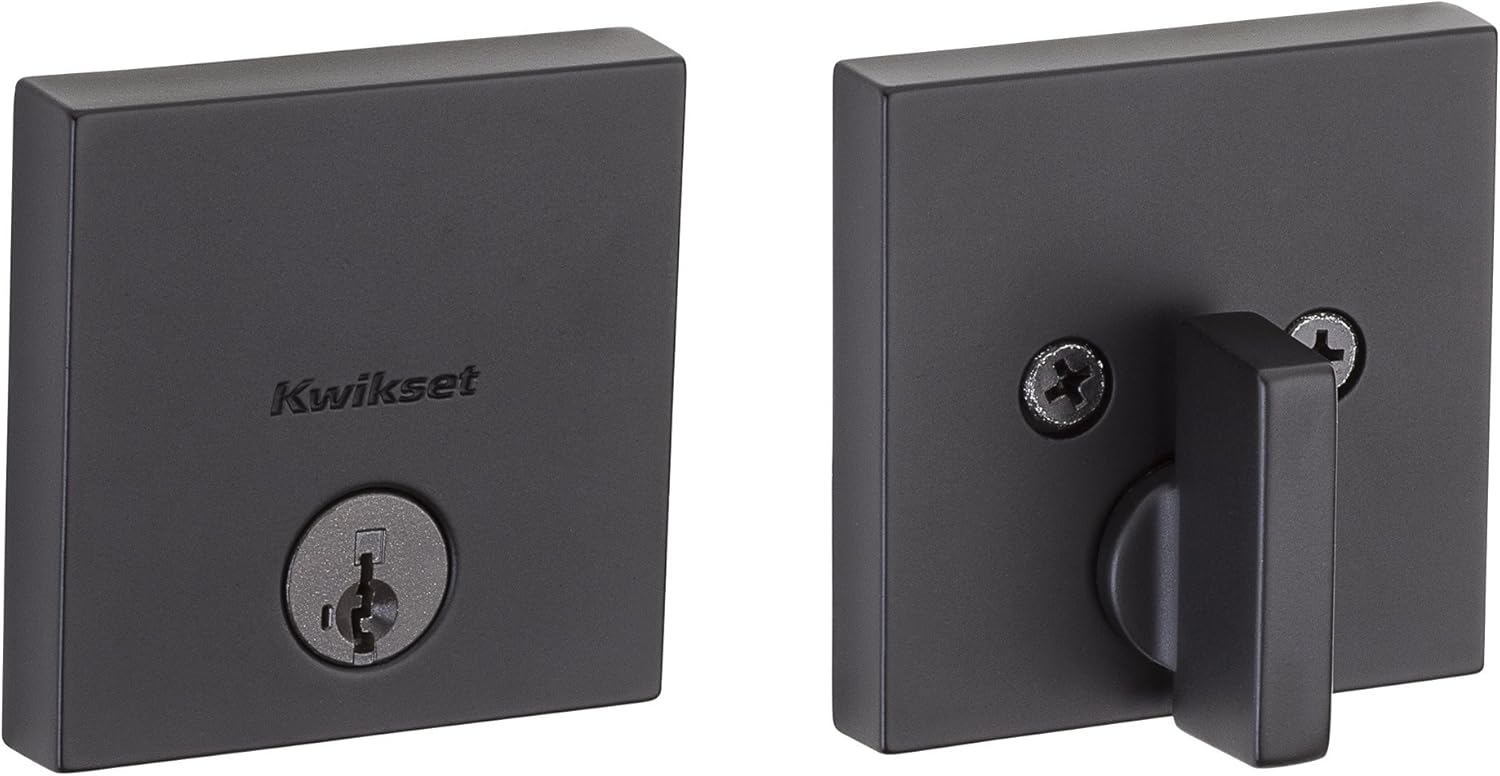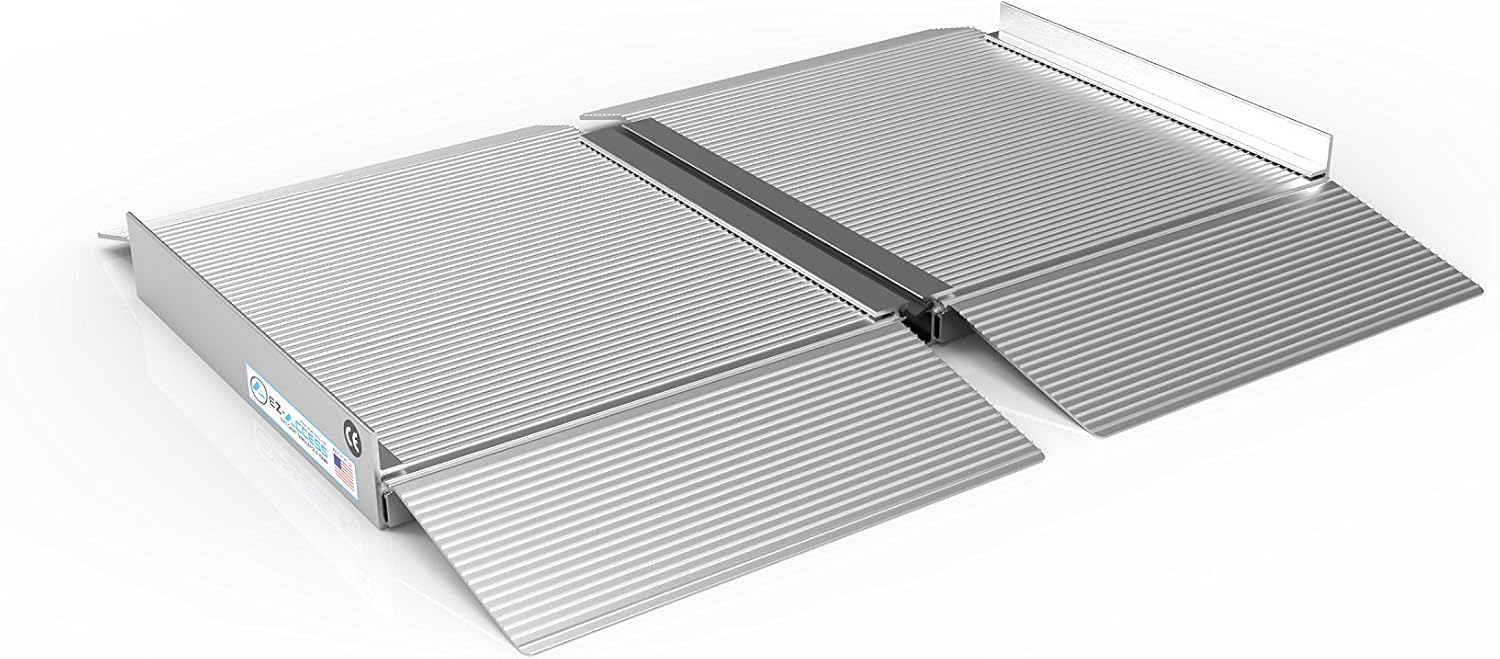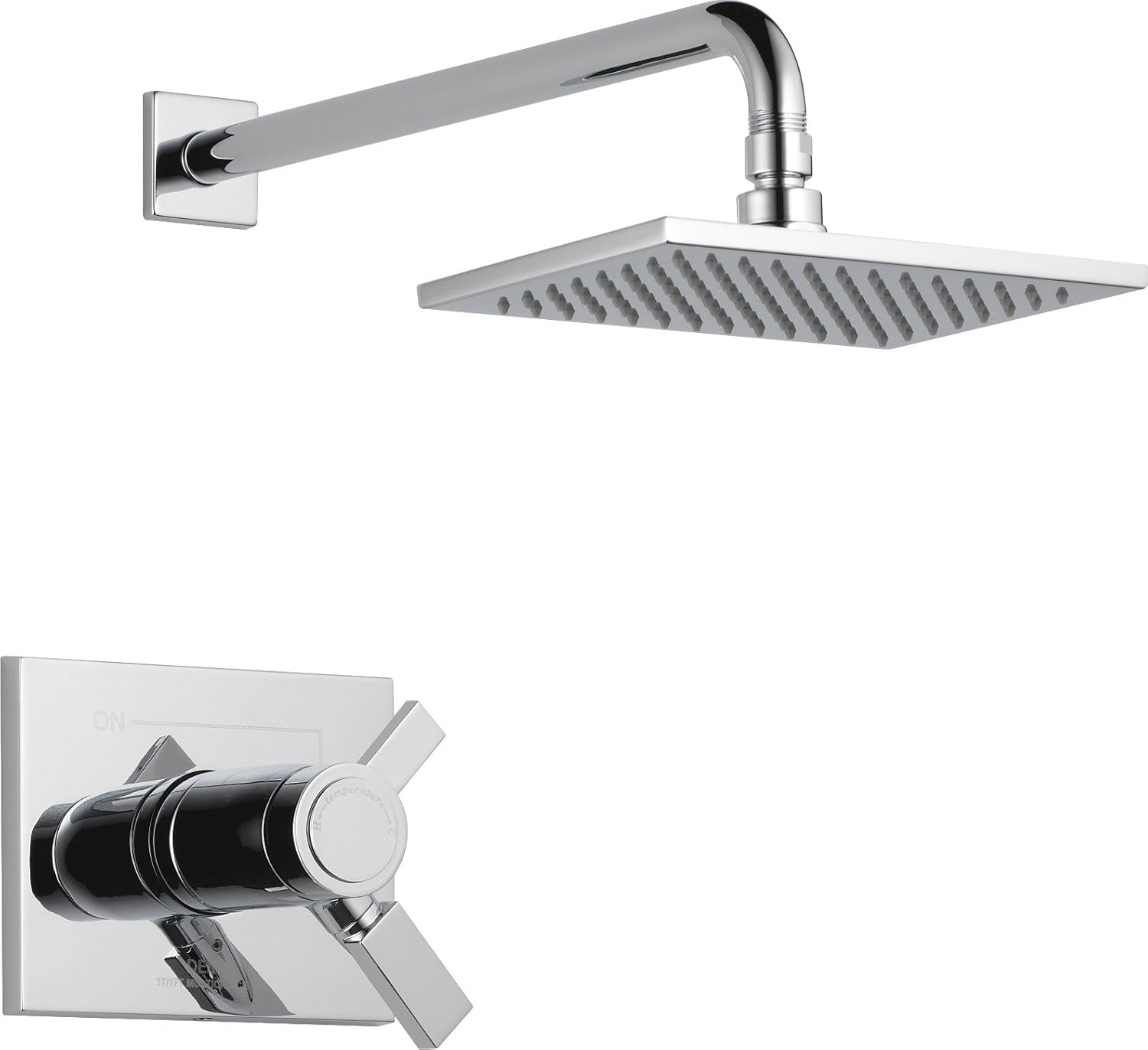Whether you’re entering retirement or experiencing it, remodeling your home has probably been on your mind for a while. Now, it’s finally time to implement all the ideas you’ve had during your working years and make your dreams a reality in your golden ones.
As you start to plan, focus on creating a home that balances safety and comfort with your design preferences. One of my biggest jobs, when I work with my aging-in-place clients, is to help them prioritize life safety, fall prevention, and convenience without sacrificing aesthetics.
The ultimate goal of smart aging-in-place design is a safe home as you age. Yet, so many DIYers I talk to fail to think through some of the basics of home safety. That’s why I’ve created this checklist of the nine most important safety features your home must have, along with product suggestions so you can quickly upgrade the safety of your aging-in-place home.
Here are nine must-have safety features for every aging-in-place home.
1. General Home Safety
Use this checklist to determine which safety features and products should be in your aging-in-place home. For instance, features like smoke and carbon monoxide detectors, a fire extinguisher, deadbolt locks, and supplemental heating systems are all safety features that should be installed and checked to be in good working order. There are a plethora of safety features that can be implemented when designing your home, so be sure to speak to your CAPS contractor to see what they recommend for your personal situation.
Product Checklist:
![]() Fire Extinguisher – choose a 1.25-gallon capacity or higher and have multiple extinguishers throughout the home
Fire Extinguisher – choose a 1.25-gallon capacity or higher and have multiple extinguishers throughout the home
Smoke and CO Detector – opt for a dual detector that’s sensitive enough to detect a smoldering fire
Smart Smoke and CO Detector – or consider a smart detector linked to your smartphone and alarms that let you know when batteries are running low so you’re always protected
 Deadbolt – choose a deadbolt with an easy-to-grasp lever lock to avoid pain in arthritic hands
Deadbolt – choose a deadbolt with an easy-to-grasp lever lock to avoid pain in arthritic hands
Smart Deadbolt – or go keyless to remove the pain of using a key and have added security of locking your home remotely with a smart deadbolt
2. Fire Exits
Building codes typically require an emergency escape route from bedrooms in case of a fire, specifically addressing the need for a minimum-sized window or a direct exterior door. If you have mobility impairments or any other type of physical or cognitive challenges, you or your loved ones may be at an increased risk in the event of a fire.
An evaluation of your home should be made to ensure a safe escape in both your current condition and your anticipated circumstances. Develop an escape process to identify what may be required to enhance safety. Here are a few things to consider:
- If a full doorway is not available, a window opening should be as large as possible
- Look for ways to make the escape as simple and quick as possible
- Study the egress areas outside the building for ease of access and a level base
Easily and safely getting through doorways, especially if your parent uses a walker or wheelchair, means seconds saved during an emergency when every second counts.
Take a look at two of my articles about how to widen narrow doorways and make entryway thresholds less hazardous for more product and renovation tips.
“How to Widen a Doorway for Aging in Place”
“Tips for Making Doorway Thresholds Safe for Aging in Place”
3. Falls
An essential part of improving your safety is fall prevention. According to the Centers for Disease Control and Prevention (CDC), falls have been found to be the leading cause of death and injuries in the home. The direct medical costs for all fall injuries is almost $50-billion annually. About one-third of those falls can be directly linked back to environmental hazards within the home.
Fortunately, these hazards can be minimized and even eliminated during an aging in place project. Falls that are related to other causes, like physical impairments and chronic conditions, can be greatly mitigated through design with safety and fall prevention in mind.
Work with your CAPS contractor to conduct a full inspection of your home to identify possible fall hazards. When assessing the house, there are several areas that are critical to address:
- Transition areas can be improved with grab bars mounted next to doors, in the kitchen, or near the bed to assist you
- Stairs can be improved with a second handrail; this can provide additional support for your caregiver as they assist you on the stairway
- Pathways may require improved lighting at critical areas with either switches or automatic sensors
- Carpeting or rugs that could present a tripping hazard should be stretched or removed
- Door thresholds present trip hazards and are not usually wheelchair accessible, but the same standard can be achieved by using no more than 1/2-inch for a beveled threshold
- Tub or shower floors can become wet and should be installed with non-slip flooring
Product Checklist:
Grab Bars – place sturdy grab bars throughout the bathroom and kitchen to prevent accidents caused by slips and falls
 Toilet Grab Bars – install grab bars by the toilet that fold against the wall when not in use for added clearance and safety
Toilet Grab Bars – install grab bars by the toilet that fold against the wall when not in use for added clearance and safety
Handrail – add a second handrail to staircases where possible for added stability
Low-Profile Threshold Sill – create smoother transitions from room to room to decrease the risk of a fall with a 1/8-inch threshold sill
 Wheelchair Ramp – add a wheelchair ramp to make accessibility easier and safer for older adults with wheelchairs and walkers
Wheelchair Ramp – add a wheelchair ramp to make accessibility easier and safer for older adults with wheelchairs and walkers
Shower Mat – add a non-slip shower mat to the bottom of your tub or shower to reduce slips and falls. You can also add one just outside the shower for added stability
For even more product suggestions for preventing falls and installation tips, take a look at these two other articles I recently completed.
“The Best Bathroom Grab Bars for Aging in Place and How to Install Them”
“The Best Flooring Products for the Aging-in-Place Bathroom”
“Essential Safety Accessories for the Aging-in-Place Bathroom”
4. Scalds and Burns
This is a big one! Burns from scalding water is a major cause of accidents among older adults. If you’re concerned about the water temperature of your parent’s sinks and showers or worry your parent won’t be able to sense temperate extremes, make anti-scalding valves and other water safety measures a priority during your renovation.
Since anti-scalding valves or water heater adjustments involve plumbing, this is a good time for DIYers to call in a plumber or professional contractor.
5. Tub and Shower Valves
If you do decide to tackle the installation of anti-scald valves or related tub and shower valve hardware on your own, make sure the valves you choose are anti-scald. In typical bathrooms, the valves are normally pressure balanced. This means that they control the temperature variations when there is a sudden pressure difference caused by turning on a washing machine or the flushing of a toilet. While these valves are important (and required by building and plumbing codes), they don’t have the ability to limit the maximum temperature.
An anti-scald valve, however, can sense the actual water temperature and prevent the valve from dispensing any water that is above a safe setting. Find valves that keep water temperatures below 180-degrees to prevent scalding and potential slips and falls that can happen as a result of a reaction to sudden hot temperatures.
Product Checklist: Temperature Controlled Shower Faucet – reduce scalding with a faucet that controls temperature and allows you to set max temps
Temperature Controlled Shower Faucet – reduce scalding with a faucet that controls temperature and allows you to set max temps
Thermostatic Water Mixing Valve – add a temperature valve to your water supply that limits the range of both hot and cold water so your parent stays safe and comfortable
6. Drain and Supply Pipes
If you utilize a wheelchair and need a roll-under sink for easy access, the drain and supply pipes should either be insulated or screened with an apron to prevent any contact during use. If you have sensory impairments, you may not feel the increasing temperature of the pipes. Insulation kits are available from any home center to ensure your safety.
Product Checklist: Pipe Wrap Insulation – wrap your under-sink pipes with a thin layer of insulation to reduce the risk of burns
Pipe Wrap Insulation – wrap your under-sink pipes with a thin layer of insulation to reduce the risk of burns
Foam Pipe Insulation – or you can opt for a simple foam wrap
7. Ranges and Cooktops
Ranges and cooktops are other areas that should be properly inspected for safety issues. The ADA (American’s with Disabilities Act) wants to see a smooth electric cooktop ranges with forward burners only, meaning there’s little to no need for an older adult to reach from one burner to get to another.
If you choose an electric, smooth top stove, it should have an indicator or warning light that lets you know when the surface is too hot to touch. A good kitchen design will always minimize the distance between appliances and countertops so that a hot pan or baking sheet does not need to be carried far once removed from the oven or stovetop.
Product Checklist: Smooth Electric Induction Cooktop – find a cooktop where all burners and controls are towards the front
Smooth Electric Induction Cooktop – find a cooktop where all burners and controls are towards the front
Read more about safe kitchen appliances for aging in place and some of the best ways to configure your kitchen with safety in mind by taking a look at my two recent articles.
“Configuring the Kitchen Triangle and Relocating Appliances Safely for Aging in Place”
“Tips for Converting Your Range to Cooktop Stove and Wall Oven for Aging in Place”
8. Communications and Technology
As you age, it’s important that you’re able to call for assistance or be easily monitored by a caretaker. There are a host of products on the market to help ensure your safety.
If you have hearing loss, a telephone device for the deaf (TDD) can provide a means to type text messages to others. They also offer visual signals to alert when a call is incoming.
A monitoring system can also provide peace of mind and allow you to live independently with an added margin of safety. Traditionally, these devices were worn as bracelets or necklaces, but they can now be incorporated into Wi-Fi-connected devices like tablets and laptops. Some devices have features that require a response from the wearer every so often to keep caregivers and family updated on the wearer’s current situation. You can also opt for monitoring services by a company that can be called in case of emergencies.
Product Checklist: Caregiver Wireless Calling Device – install an in-home call system so your parent doesn’t have to yell across the house to a spouse or caregiver
Caregiver Wireless Calling Device – install an in-home call system so your parent doesn’t have to yell across the house to a spouse or caregiver
Wearable Medical Alert Device – give your parent a wearable device so help is always fast to arrive in case of an emergency Landline Phone Sets – if your parent isn’t comfortable with technology, consider a good ole’ fashioned landline and place phones throughout the house, including the bathroom, in case of an emergency
Landline Phone Sets – if your parent isn’t comfortable with technology, consider a good ole’ fashioned landline and place phones throughout the house, including the bathroom, in case of an emergency
9. Security Systems
No matter where you live, a security system should always be considered to provide protection against break-ins, fires, and medical emergencies. Security systems can also be integrated into your monitoring system, giving you a comprehensive safety package. Wireless smart systems allow for an easy installation and a flexible location of the system. With the advancement of technology, the systems can also be designed to adjust lighting, thermostats, and locks – a great feature for anyone with a mobility impairment.
Product Checklist: Basic Security System – adding a simple, easy-to-use security system synced to your parent’s smartphone or speaker will alert them to a break-in or other emergency and make sure help is on the way
Basic Security System – adding a simple, easy-to-use security system synced to your parent’s smartphone or speaker will alert them to a break-in or other emergency and make sure help is on the way
Advanced Security System – or add a comprehensive security system complete with HD video monitoring, two-way audio, siren, and cloud storage to record any intrusion
Time to Get Started
There’s no better time to make these safety upgrades than now. In just a weekend you can make a big dent in this checklist and immediately increase the safety and security of your aging-in-place home. As you work your way down the list, send me any questions you have using the comments section below.
Good luck with your next aging-in-place renovation!

